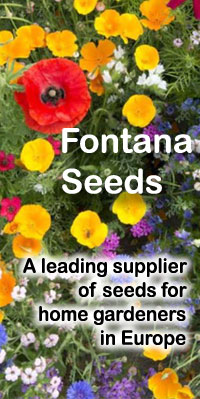L’induction de la floraison a une importance majeure d’un point de vue écologique et agronomique. Une floraison synchronisée et se produisant à point nommé est essentielle pour optimiser la pollinisation et permettre la production et la maturation des semences dans des conditions environnementales favorables. Ce sont des facteurs environnementaux, en particulier la lumière, qui déclenchent ce processus dont les mécanismes ont fait l’objet de nombreuses études. Ces expériences ont toutefois été généralement effectuées en chambre de croissance, en l’absence d’UV-B, un type de rayons qui fait partie intégrante de la lumière du soleil et qui est notamment responsable des coups de soleil. Une équipe de l’Université de Genève (UNIGE) a découvert que les UV-B peuvent être de puissants déclencheurs de floraison, mais qu’une protéine, appelée RUP2, bloque leur action pour éviter une floraison précoce. Ces travaux sont publiés dans la revue Genes & Development.
De nombreuses plantes ont une floraison dite photopériodique, qui dépend des changements de durée des jours et donc, des saisons. Certaines d’entre-elles vont fleurir lorsque les jours s’allongent, d’autres lorsque les jours raccourcissent. La perception de la durée du jour par ces plantes est essentielle pour contrôler le déclenchement de la floraison dans les écosystèmes naturels et assurer le succès de la reproduction.
La compréhension des mécanismes à l’œuvre dans ce processus constitue également un enjeu de taille pour l’horticulture et les systèmes de production agricole, afin d’optimiser les rendements. Les plantes sont capables de percevoir et d’ «analyser» la lumière, qu’il s’agisse de son intensité, de sa couleur ou de sa durée. Roman Ulm, professeur au Département de botanique et biologie végétale de la Faculté des sciences de l’UNIGE, cherche à savoir comment les plantes intègrent ces différentes informations pour contrôler la floraison.
Le rayonnement UV-B, un acteur oublié
Les mécanismes impliqués dans la floraison ont été étudiés dans l’espèce modèle Arabidopsis thaliana (Arabette des dames), qui fleurit principalement en mai, en Suisse, lorsque les jours croissent. «La plupart des recherches sur la floraison de cette plante ont été menées dans des chambres de croissance dont le spectre de lumière artificielle ne comprend pas les UV-B, qui font pourtant partie intégrante de la lumière solaire. Nous avons donc inclus ce type de rayons, étant donné que les plantes possèdent des récepteurs aux UV-B», expose le chercheur.
En collaboration avec des chercheurs des universités de Lausanne, de Tübingen et du Helmholtz Zentrum München à Neuherberg (Allemagne), les biologistes ont démontré que les UV-B peuvent induire la floraison d’Arabidosis tout au long de l’année. «Leur action est toutefois bloquée pendant les journées courtes par une protéine appelée RUP2», explique Adriana Arongaus, chercheuse au sein du groupe genevois et première auteure de l’étude.
RUP2 est l’une des aiguilles de l’horloge annuelle
C’est en décortiquant les rouages moléculaires à l’œuvre que les biologistes ont saisi le rôle crucial de RUP2. «Indépendamment des saisons, les UV-B peuvent stimuler la production d’une hormone de floraison, la protéine FT, qui migre dans le méristème – le tissu qui assure la croissance de la plante – et le reprogramme pour entamer la phase de floraison. RUP2, pour sa part, inhibe de façon indirecte la production de cette hormone, et réprime ainsi la floraison», ajoute la biologiste. Or, lorsque les jours s’allongent, des photorécepteurs présents dans les feuilles induisent une telle production de protéine FT que la floraison s’enclenche malgré la présence de RUP2. C’est cet équilibre changeant au cours des saisons qui permet la mise en place d’une floraison photopériodique, avec RUP2 comme acteur central.
L’induction de la floraison par les UV-B a été découverte chez des plants mutants dépourvus de RUP2. «Nous aimerions maintenant savoir si ce rôle des UV-B existe et est important chez d’autres plantes, et pourquoi il a été réprimé par RUP2 au cours de l’évolution chez Arabidopsis», note Roman Ulm. Après avoir découvert l’existence d’un récepteur aux UV-B, ainsi que son impact dans la croissance et le développement de la plante, le chercheur entend mettre au jour les différentes fonctions de ce récepteur, qui pourront être intégrées dans les paramètres d’étude des systèmes écologiques et agroalimentaires.






















